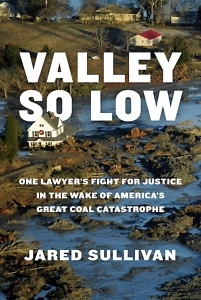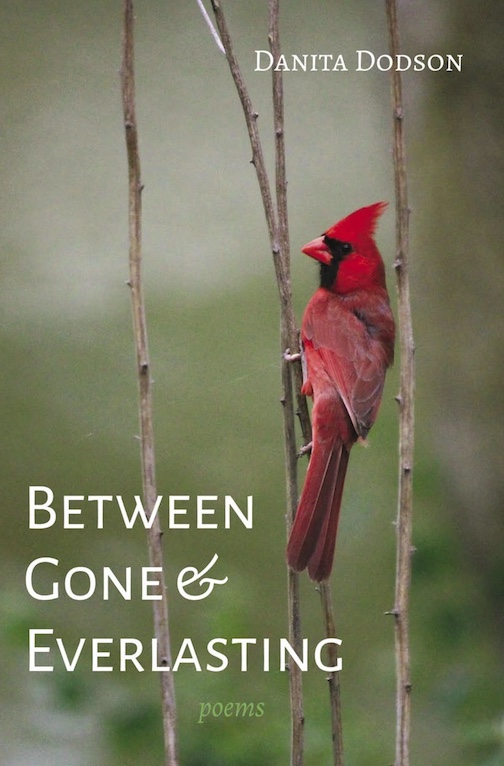Coal Catastrophe
In Valley So Low, Jared Sullivan details the long fight for justice after a TVA environmental disaster
On December 22, 2008, in the East Tennessee town of Kingston, an earthen dam that held years of coal waste from a TVA power plant collapsed, sending a wave of coal sludge over 300 acres. Making worldwide headlines, the environmental disaster destroyed homes, poisoned a river, and would soon sicken nearly all the workers assigned the difficult task of cleaning up the mess. Valley So Low: One Lawyer’s Fight for Justice in the Wake of America’s Great Coal Catastrophe, the first book from Franklin-based journalist Jared Sullivan, describes not only the disaster and aftermath, but the role of Jim Scott, a Knoxville attorney who risked everything to seek justice as workers sickened and died.

The workers, the complicated lawsuit against Jacobs Engineering (a company TVA hired to clean the sludge), and the large legal cast involved are deftly woven together with a skill reminiscent of Jonathan Harr in his nonfiction classic A Civil Action — or any of several Grisham novels. Sullivan answered questions from Chapter 16 by email.
Chapter 16: In your notes, you write that you were drawn to the story when you attended a ceremony in 2018 on the 10th anniversary of the Kingston disaster. What about the event spoke to you as a writer?
Jared Sullivan: Any story worth telling has two things: high stakes and compelling characters. It was clear that the legal battle resulting from the Kingston disaster had both. At the ceremony, I met a part-time pastor from New Market, Tennessee, by the name of Jeff Brewer. Jeff had been laid off during the Great Recession, and out of desperation, he’d taken a job driving trucks at Kingston to provide for his wife and three young daughters. The hours were so grueling that he could drive home to see his family only twice a week. That’s an incredible sacrifice, but he made it without complaint. Unfortunately, by the time I met Jeff, he was sick from the coal ash he’d inhaled on the job, and his only shot at getting the money he needed to cover his mounting medical bills was through the courts. Compelling characters, high stakes.
Chapter 16: You state that you spent five years reporting and writing the book. What was it like to pursue a story for so long?
Sullivan: Once I began reporting, I decided that I would commit my life to revealing what happened at Kingston because it’s not just a local story about TVA or coal ash — it’s an American story about justice and labor and class. Working on the book came at a great personal toll. My wife and I had two daughters while I was writing it, and I eventually had to get a day job to support us, so that meant for several years all my nights, weekends, holidays, and PTO went toward the book. My wife, God bless her, supported the project fully, but she still wanted to kill me by the end. And I can’t blame her. I missed out on a lot. I’m trying to be a better husband and father now. We went fishing and camping a lot this summer to make up for the past few years of my being stuck at home writing and reporting.
Chapter 16: So many people ultimately suffered, physically and mentally, from the sludge and fly ash — workers, lawyers, spouses, children, even a reporter who waded too deeply into the story of her life. How did you choose who to focus on?
 Sullivan: I write a lot about the cleanup workers, but I decided to focus much of the book on a small-time Knoxville lawyer named Jim Scott, in part because he has a Huck Finn quality about him. He’s a good-hearted knucklehead. And he was trying to do something improbable: beat one of TVA’s billion-dollar contractors in court with very little assistance and very few resources. He almost wrecked his life trying to do it, as I detail in the book. And I think everyone likes a David vs. Goliath story like that. My decision to focus on Jim also had a lot to do with the fact that he could lead the reader through the entire story; he was involved in Kingston, in one way or another, from 2008 until 2023. When you’re writing narrative nonfiction, you need “mules,” as the great Lawrence Wright has put it, who can carry the reader through most of the story, and Jim was a mule in this sweeping, decade-plus-long narrative. He was everywhere.
Sullivan: I write a lot about the cleanup workers, but I decided to focus much of the book on a small-time Knoxville lawyer named Jim Scott, in part because he has a Huck Finn quality about him. He’s a good-hearted knucklehead. And he was trying to do something improbable: beat one of TVA’s billion-dollar contractors in court with very little assistance and very few resources. He almost wrecked his life trying to do it, as I detail in the book. And I think everyone likes a David vs. Goliath story like that. My decision to focus on Jim also had a lot to do with the fact that he could lead the reader through the entire story; he was involved in Kingston, in one way or another, from 2008 until 2023. When you’re writing narrative nonfiction, you need “mules,” as the great Lawrence Wright has put it, who can carry the reader through most of the story, and Jim was a mule in this sweeping, decade-plus-long narrative. He was everywhere.
Chapter 16: The legal details of a decade-long lawsuit are voluminous and serpentine. How did you separate the wheat from the chaff?
Sullivan: My process was messy. I built the book around scenes. And I didn’t write the scenes in order. I wrote the parts that got me excited first, then stitched them together with exposition and character backstory. The first chapter I wrote was about — and I’m trying not to give too much away — a fiasco that left Jim’s team scrambling to find a new office and recover damaged documents shortly before the trial against TVA’s contractor. I wrote the book out of order like this because I trusted that the parts I was excited to write first would be parts that readers would be excited to read, and I wanted to make sure I gave the key scenes ample space. Because you think 120,000 words is a lot of room, but it’s not. As for the legal aspects of the story, I reverse-engineered it: I learned what the critical legal issues were in the trial and in some pivotal hearings leading up to it, then made sure I mentioned those issues early on. I tried to keep the legal issues simple — I tried to paint in primary colors.
Chapter 16: Have you been to the site of the dam break recently? How does it look today?
Sullivan: The last time I visited the site was in December 2020 for another ceremony commemorating the anniversary of the disaster. It’s odd: the site is mostly soccer fields now. That ceremony was the last time I saw Ansol Clark, one of the book’s main characters, alive. He was a truck driver who responded to the disaster the morning it happened in 2008. He asked how my baby girl was and, out of the blue, he told me that he’d had a good life. Having been sick for years, he could sense that the end was coming, I think, and he was right.
Chapter 16: Has coal sludge storage in Tennessee become safer since Kingston?
Sullivan: Not really, in my view. Earlier this year, under the Biden administration, the EPA implemented new rules that require power producers to monitor their legacy, or inactive, coal-ash dump sites and to remediate the sites if the ash is contaminating groundwater. There are hundreds of these dump sites across the country, and each year they contaminate the drinking water of millions of Americans. I suspect that, under the EPA’s new rules, TVA will have to clean up many of its remaining legacy coal-ash dump sites, but I haven’t seen it make any such announcement yet. This is pure speculation, but I suspect it’s waiting to see who wins the election because a second Trump administration would likely result in the rollback of more environmental rules and safeguards.

Michael Ray Taylor is the author of Hidden Nature and other books. He was recently awarded a fellowship in novel writing by the Arkansas Arts Council.





